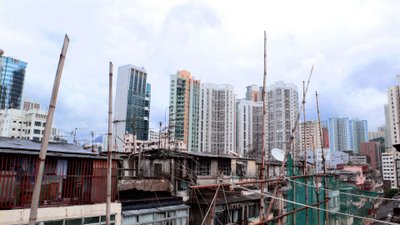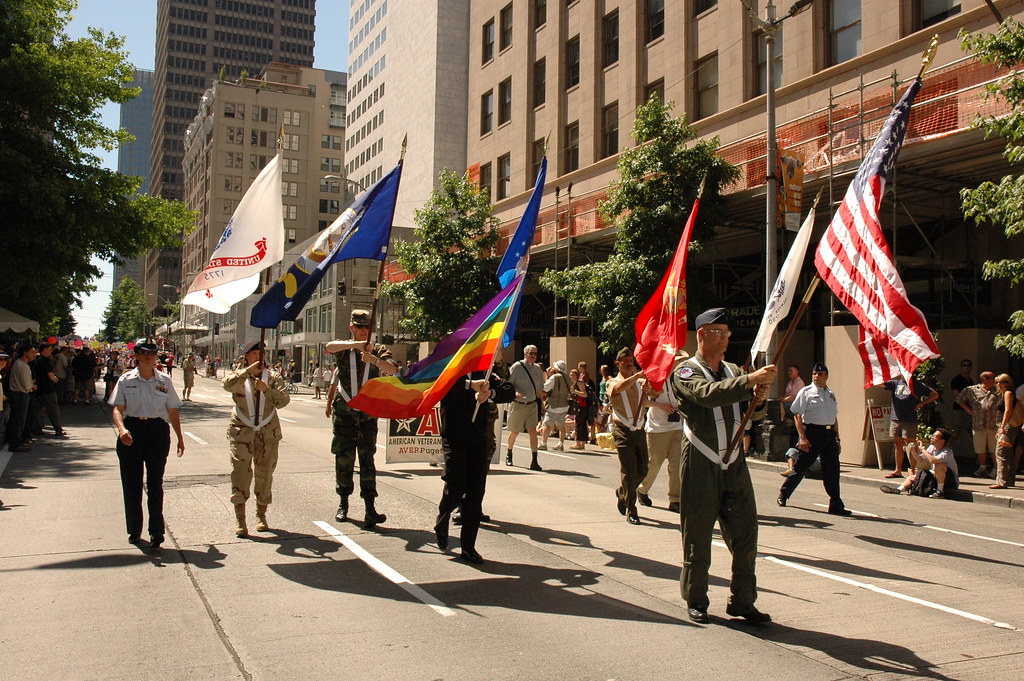 If you climb off the MTR in Tsuen Wan (荃灣) you'll find yourself initially surrounded by a giant shopping mall, rising skyscrapers and the bustle of shoppers. A typical representation of Hong Kong’s fast paced development blunts up against your face; an urban landscape prodded by the uninhibited movement of capital, goods and services. But Hong Kong's image of a mega city awash in wealth is marred by something less glamorous.
If you climb off the MTR in Tsuen Wan (荃灣) you'll find yourself initially surrounded by a giant shopping mall, rising skyscrapers and the bustle of shoppers. A typical representation of Hong Kong’s fast paced development blunts up against your face; an urban landscape prodded by the uninhibited movement of capital, goods and services. But Hong Kong's image of a mega city awash in wealth is marred by something less glamorous.
Look up while wandering the busy streets of Tsuen Wan and you'll notice something completely different: dilapidated tin roofs just barely visible over the tops of buildings. If you take a moment to climb to the roofs of one of these buildings and you’ll find yourself face to face with the remnants of a population explosion fifty years in the making. Half abandoned tin and concrete structures surrounded by a sea of TV antennas sit juxtaposed against a backdrop of newly risen high rises.
 As a half century of Hong Kong life is being coarsely removed in the interest of pricy real estate development, it is clear that the Hong Kong government, who once turned a blind eye to squatters it could not find housing for, is now finding these rooftop dwellings an ugly stain upon Tsuen Wan’s mounting skyline. God forbid having to look out your 39th floor office window every morning to see the poor hang their laundry out to dry; they were only once the backbone of Hong Kong’s raising economy.
As a half century of Hong Kong life is being coarsely removed in the interest of pricy real estate development, it is clear that the Hong Kong government, who once turned a blind eye to squatters it could not find housing for, is now finding these rooftop dwellings an ugly stain upon Tsuen Wan’s mounting skyline. God forbid having to look out your 39th floor office window every morning to see the poor hang their laundry out to dry; they were only once the backbone of Hong Kong’s raising economy.
The Hong Kong we see today can very much be viewed as a half century reaction to mainland China. Soon after the communist takeover in 1949, Hong Kong's population exploded with migrants. Caused by such socially disruptive events as the Great Leap Forward, the Cultural Revolution and the Tiananmen Square incident (or massacre, depending on which side on the globe you stand), wave after wave of refugees flooded into Hong Kong. The combination of cheap labour and capital was a major boon to Hong Kong’s budding economy and established the city as a center for textile manufacturing during the 1950s and 60s. Without the cheap migrant labour that emigrated from China, Hong Kong would not be the financial center it is today.
 But the growing number of squatter camps posed a major problem for the Hong Kong government. A 1953 fire in the shanty towns of Shek Kip Mei force the government to take action. In places like Tsuen Wan, most of the refugees who filled the hillside and laboured in the factories below were quickly provided with public housing. But the government often turned a blind eye to rooftop dwellers that settled into their new homes and integrated into the community. Doing so was both cheaper for the refugees and the government who wouldn’t have to subsidize their housing.
But the growing number of squatter camps posed a major problem for the Hong Kong government. A 1953 fire in the shanty towns of Shek Kip Mei force the government to take action. In places like Tsuen Wan, most of the refugees who filled the hillside and laboured in the factories below were quickly provided with public housing. But the government often turned a blind eye to rooftop dwellers that settled into their new homes and integrated into the community. Doing so was both cheaper for the refugees and the government who wouldn’t have to subsidize their housing.
Far from the "Cidades de Deus" of today’s global cities, the rooftop dwellers of Tsuen Wan consist of elder residents heavily integrated into the Hong Kong’s social and economic life. But as real estate developers transform an area that once used to define the city’s edge, rooftop dwellers are finding themselves forced out of their homes on unjust terms.
The relocation for rooftop dwellers is a complex web of hypocrisy and embarrassment for the Hong Kong government. While public housing facilities are usually an improvement over the improvised tin roofed shacks that line the street tops of Tsuen Wan, the conditions of the government's evictions are often as poor as the squalor the eviction notices are given for. Since squatting is illegal in Hong Kong, there is no compensation for the eviction; and public housing, although heavily subsidized, is never free.
After years of living in the same home, rooftop dwellers are only now finding themselves separated from their friends and neighbours, pushed into the more expensive life of public housing estates and forced to commute long distances to work each day. How these new tenants are suppose to afford their homes has never been addressed by the Hong Kong government, which only recommends a minimum wage of $17-18 HKD an hour in a city where McDonalds pays $15 HKD an hour. As the cost of real estate climbs, developers and private business are actively seeking to develop areas once reserved for Hong Kong’s poor.
 Hong Kong real estate is so profitable that the government acquires the majority of its revenue through land sales. The auction of three residential sites last September fetched a total of $10.15 Billion HKD (around $1.3 Billion US) for the Hong Kong government. A few weeks earlier, the Hong Kong Disneyland resort opened at a cost of $3.5 Billion US with the Hong Kong government footing 90% of the bill.
Hong Kong real estate is so profitable that the government acquires the majority of its revenue through land sales. The auction of three residential sites last September fetched a total of $10.15 Billion HKD (around $1.3 Billion US) for the Hong Kong government. A few weeks earlier, the Hong Kong Disneyland resort opened at a cost of $3.5 Billion US with the Hong Kong government footing 90% of the bill.
Parsimony is clearly not in the government’s vocabulary for development; only in the treatment of Hong Kong’s poor. Since the 1997 return, mainland Chinese have continued to migrate into the city. Even as the rate of Hong Kong's population continues to sore, the need for public housing is ignored in the face of more lucrative development. As the remnants of a once vibrant community are being swept from Tsuen Wan, the austere marginalization of Hong Kong’s poor make it clear that a city once born on the backs of these citizens is now throwing them by the wayside.
 If you climb off the MTR in Tsuen Wan (荃灣) you'll find yourself initially surrounded by a giant shopping mall, rising skyscrapers and the bustle of shoppers. A typical representation of
If you climb off the MTR in Tsuen Wan (荃灣) you'll find yourself initially surrounded by a giant shopping mall, rising skyscrapers and the bustle of shoppers. A typical representation of  As a half century of Hong Kong life is being coarsely removed in the interest of pricy real estate development, it is clear that the Hong Kong government, who once turned a blind eye to squatters it could not find housing for, is now finding these rooftop dwellings an ugly stain upon Tsuen Wan’s mounting skyline. God forbid having to look out your 39th floor office window every morning to see the poor hang their laundry out to dry; they were only once the backbone of
As a half century of Hong Kong life is being coarsely removed in the interest of pricy real estate development, it is clear that the Hong Kong government, who once turned a blind eye to squatters it could not find housing for, is now finding these rooftop dwellings an ugly stain upon Tsuen Wan’s mounting skyline. God forbid having to look out your 39th floor office window every morning to see the poor hang their laundry out to dry; they were only once the backbone of  But the growing number of squatter camps posed a major problem for the
But the growing number of squatter camps posed a major problem for the 


